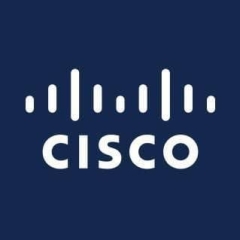What is our primary use case?
We primarily use the solution for MPLS. We use it to have a connection to the telecom and we also have some radio networks that we use it for. We have two WAN ports - one is the MPLS one is the radio backbone.
What is most valuable?
The solution is excellent mainly for supporting our two WAN ports. We can dedicate which WAN is taking over and which one is available or not. It's great that we can also connect them to the internet. We can have a third line to connect to the internet providers for our internet solution. Everything is redundant and everything is working so far.
Overall, it's been working well for us.
The solution is great at aggregating the traffic and then sending it in one direction.
We have a good knowledge base in-house and good support in general and therefore we have continued to use it over the years.
The product can scale well.
The solution is very stable.
What needs improvement?
The solution basically does exactly what we need it to do. I can't recall finding a feature that was lacking for our purposes. We aren't actually using many of the features in general.
The solution could be a bit cheaper.
For how long have I used the solution?
We've been using the solution for about three or four years at this point.
What do I think about the stability of the solution?
We've had absolutely no issues with the stability of the solution. It doesn't crash or freeze. There are no bugs or glitches. It's been quite good overall.
What do I think about the scalability of the solution?
This is deployed in our headquarters. We have them around the country, and we have some large offices and have the solution at all of them. There are likely 1,000 or more users on the solution all over the country.
The same generation and the same product is the easiest to scale and we have them mostly on some of our sites. We have the needed redundancy. That said, I would question the scalability if you are dealing with multiple types or other versions or other products. It needs to be of the same generation to take advantage of the path of least resistance.
We never test it with other solutions, however, with Cisco and other vendors is there is not recommended.
How are customer service and technical support?
We mainly use the solution directly and as-is. There is a lot of redundancy, so if something goes wrong, there's something to catch it. We don't really use too many features for SD-WAN. So far, we don't need anything added on, and we really don't need too much support from customer service.
We buy support, however, in the latest versions, we really haven't needed assistance. IN the past, we did have some issues and support was there to help us get replacements, for example. They make getting replacements easy.
They usually reply to us within 15 minutes or so, if we do reach out. I'd describe them as pretty responsive.
How was the initial setup?
The level of difficulty depends on the experience of the engineer. If they don't have as much experience, it may be difficult. However, those that know the product well don't find the setup process complex.
Mainly they're using a command-line interface for years and they don't ask for anything like a GUI, which would be on Windows or Linux civil server. Everybody enjoys command-line. We exchanged some other Cisco products and some other routers recently, which were working for 15 years and are still working. We just asked for new ones with new features, like more traffic, more throughput, et cetera.
I don't recall any maintenance really being needed. It works 24/7 without much need for assistance.
What about the implementation team?
We did have some outside help, although nothing was from Cisco directly. We have our contact support company, and also we have in-house knowledge. It's done together, using both teams.
What's my experience with pricing, setup cost, and licensing?
It would always be nice if the solution was a bit cheaper, however, the value is good. The cost of ownership is worth it as the solution itself is quite good and lasts years.
As a bigger company, we'd prefer to have a brand and a solution that's reliable as opposed to trying to find the cheapest option and have sleepless nights, afraid it might fail.
To calculate what we buy and how much it costs us for all the services, it's still quite a lot of money.
You have to pay between 3000 and 10,000 euros, or something in that range. The core switches Nexus cost me between 10,000 and 20,000 euros. However, they work, and that's why we use them.
What other advice do I have?
We are just a customer and end-user.
We have 1921 and 4331 router versions.
Not only does Cisco have a reputation, but we also have a good experience for a number of years, - five, 10, 15, 20 even years of use. Some of them still working even after all of this time.
In general, I would rate the solution at a seven out of ten. If it were more affordable, I might rate it higher.
Which deployment model are you using for this solution?
On-premises
Disclosure: My company does not have a business relationship with this vendor other than being a customer.




















